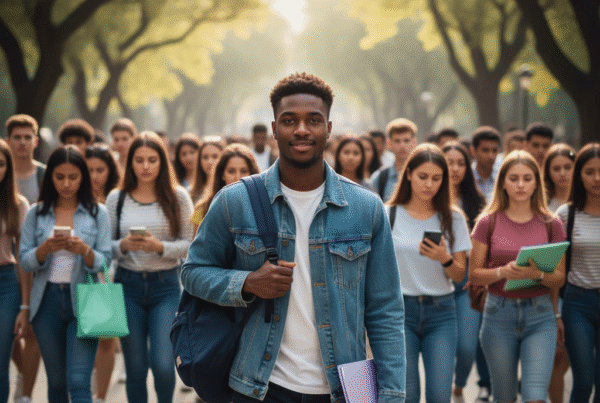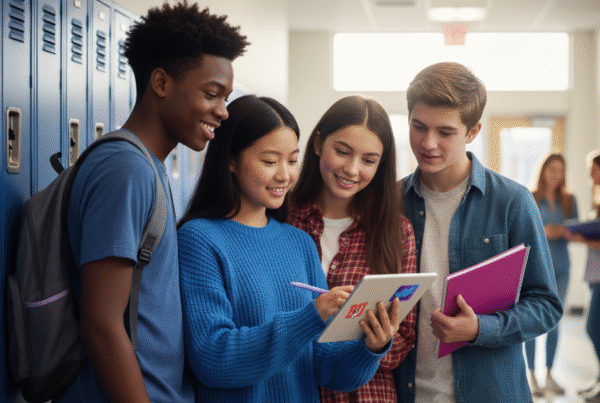The Guidance Gap Isn’t About Effort — It’s About Capacity
Every counselor knows the feeling — stacks of student folders, back-to-back meetings, a to-do list that never ends. Across the country, the average school counselor supports 376 students, far above the recommended 250-to-1 ratio. That’s hundreds of individual goals, questions, and futures to guide each year, often with limited time and few digital tools.
It’s not a lack of passion or dedication that leaves students under-supported. It’s a matter of capacity. Counselors are doing incredible work, but there simply aren’t enough hours in the day to give every student the personalized attention they deserve.
That’s where technology — and especially AI — can help. Artificial intelligence isn’t here to replace human guidance. It’s here to expand it. Tools like Pathly™ give counselors a digital partner that helps them reach every student with insight, empathy, and efficiency.
The Counselor Reality Check
Ask any counselor what their week looks like, and the answer is: everything. Academic scheduling, testing, mental health check-ins, college planning, career guidance, financial aid support, and constant communication with teachers and parents. They are the heartbeat of student success.
But even the most organized, high-performing counseling team faces a reality: there’s never enough time for deep, individualized guidance. Many students only get one brief meeting to talk about their post-graduation plans. Others, especially first-generation or underserved students, may not know what to ask for help with at all.
As a result, many students make big decisions with limited support. Not because counselors don’t care, but because the system asks them to do the impossible.
That’s where AI can serve as a force multiplier, helping counselors personalize support for hundreds of students without adding hundreds of hours.
AI as a Force Multiplier
Think of AI as a smart assistant that works quietly in the background, helping counselors prepare, organize, and personalize guidance for every student. It handles data, so people can handle relationships.
Here’s how it works with Pathly:
-
Automated Career Exploration: Students complete short personality and values assessments, and Pathly instantly generates tailored career and college matches.
-
Pre-Meeting Insights: Counselors can view summaries of student interests and top matches before one-on-one sessions.
-
Scholarship and Program Suggestions: Pathly connects students to learning programs and verified resources based on their goals.
Instead of replacing a counselor’s expertise, AI supports it — saving hours of manual research and paperwork. This means more meaningful time spent listening, mentoring, and guiding.
“Technology should never replace empathy — but it can help make empathy scalable.”
The Human + AI Partnership Model
The future of guidance isn’t human or AI. It’s human plus AI. When they work together, every student wins.
Here’s the model Pathly is built around:
-
AI handles the data. Pathly processes assessments, interest surveys, and learning options to generate insights quickly.
-
Counselors handle the dialogue. With more time freed up, they focus on human connection — interpreting results, motivating students, and supporting emotional wellbeing.
-
Students handle discovery. They can explore, reflect, and prepare before meeting their counselor, making every conversation more impactful.
Example:
Before meeting Ms. Lopez, a student completes Pathly’s career quiz. Pathly identifies a strong fit for creative technology roles and suggests related college programs. When the meeting starts, Ms. Lopez doesn’t have to ask, “So what are you interested in?” She can ask, “I saw you’re drawn to digital design — have you thought about how that could translate into a career?”
That’s the kind of transformation AI enables, not fewer human interactions, but better ones.
Case Study: Scaling Personalized Guidance
Let’s imagine a real-world example:
Riverside High, a school with 1,200 students and three counselors.
Before Pathly:
Counselors spend hours each week organizing career fair lists, filtering scholarships, and trying to remember which students need FAFSA help. One-on-one meetings often happen too late in senior year to make meaningful changes.
After Pathly:
Every student completes a short assessment. Pathly builds personalized profiles, career matches, and progress checklists automatically. Counselors open Pathly to see each student’s interests, goals, and suggested next steps — all in one place.
Now, their meetings start with direction, not data entry. Students feel seen. Counselors feel supported. The system feels sustainable.
As one counselor described it:
“It’s like having an extra teammate who works quietly in the background so I can focus on my students.”
What AI Can’t Replace
No technology can replicate the empathy, intuition, and care that make human counselors irreplaceable. AI doesn’t listen with understanding, celebrate small wins, or comfort a student after rejection. Those are human moments — and always will be.
What AI can do is make space for those moments.
By handling the research, logistics, and matching, Pathly gives counselors back time to focus on what they do best: connecting, mentoring, and inspiring confidence.
The Future of Student Support
The counselor’s role is evolving — and that’s a good thing. With tools like Pathly, schools can finally scale what’s always mattered most: personal guidance.
Every student deserves access to support that feels personal, not procedural. And every counselor deserves the tools to make that possible. Together, human empathy and AI efficiency can help bridge the readiness gap — ensuring every student gets the guidance they need, not just the time that’s left over.
Ready to see how AI can help your counseling team reach every student?




